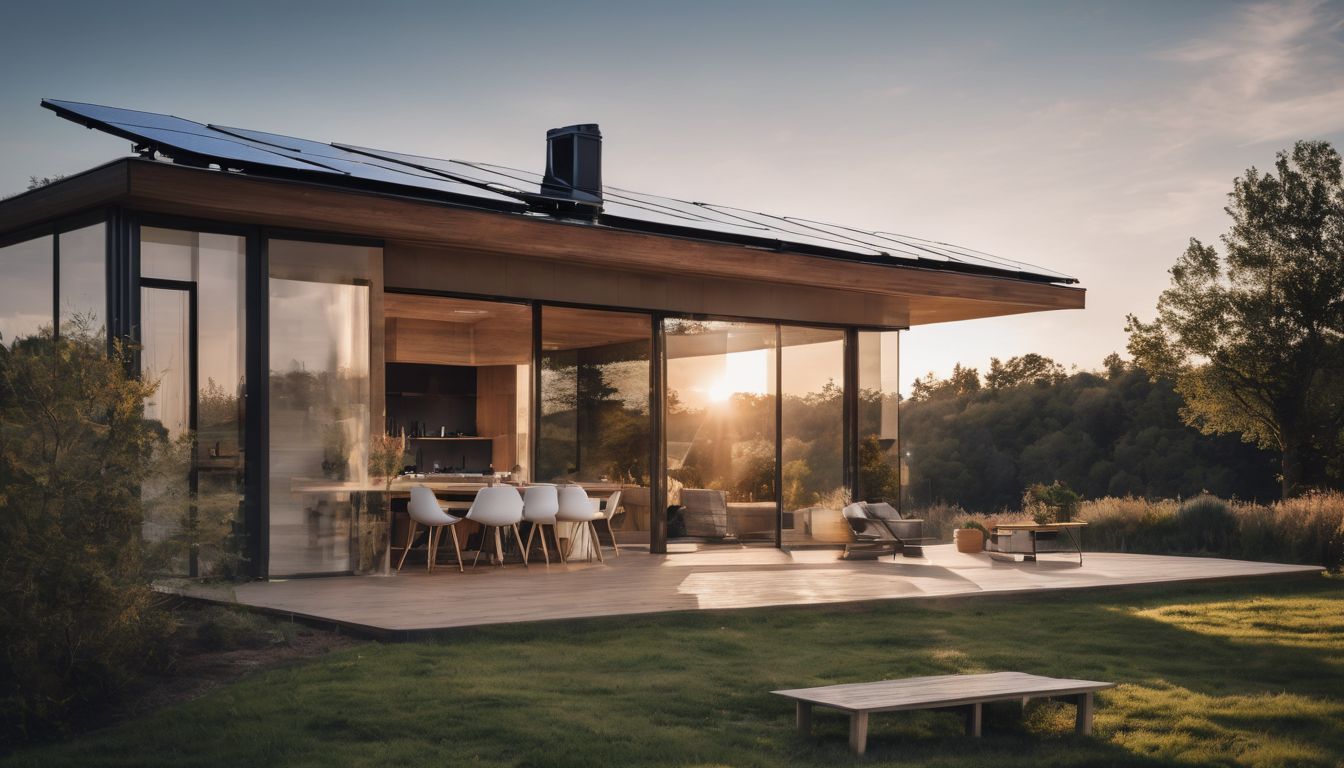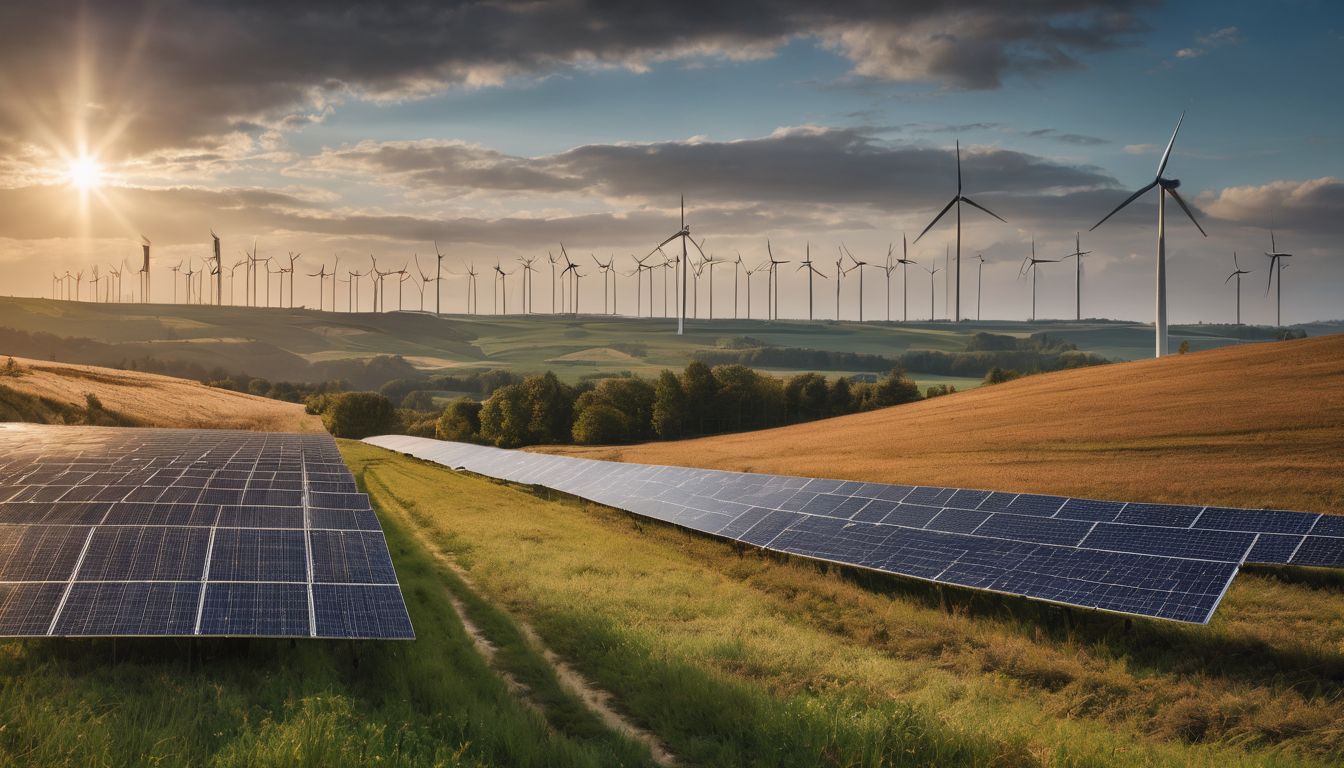Struggling to lower your electricity bills while being kinder to our planet? Energy storage technology is changing the game by making homes more energy-efficient and less reliant on the grid.
This article will guide you through choosing an energy storage system tailored specifically for your needs, ensuring that you make a savvy investment for both your wallet and the environment.
Dive in to find your power solution!
Key Takeaways
- Assess your current and future energy needs by examining electricity bills, peak usage times, appliance ratings, smart meter data, and potential home upgrades to find an efficient storage solution.
- Compare battery storage solutions with solar and electrical systems by looking at capacity, power rating requirements, integration capabilities with renewable sources, efficiency in storing electricity, and environmental impacts.
- When selecting an energy storage system consider lifecycle costs including purchase price plus maintenance expenses to ensure the choice is economically sensible over time.
- Prioritise safety features like overcharge protection in your energy storage system to guarantee safe operation for both users and the environment.
- Make sure the system chosen can perform well across various temperatures for consistent functionality throughout seasonal changes.
Understanding Your Energy Needs
Assess your current energy usage and anticipate future energy needs to determine the right energy storage system for you. This will help you make an informed decision based on your specific requirements.
Assessing your current energy usage
Understanding your home’s energy consumption is crucial for selecting an appropriate energy storage system. To manage your electricity usage more efficiently, you need to accurately determine how much power you use daily.
- Examine your electricity bills: Look at several months of bills to get an average of your monthly electricity usage. This will give insight into your baseline energy needs.
- Track peak usage times: Identify when you use the most energy during the day. High demand periods may call for higher capacity storage solutions.
- Check each appliance’s energy rating: Appliances consume varying levels of electricity. Knowing their ratings helps estimate total energy consumption.
- Use a smart meter: If possible, install a smart meter for real-time monitoring of the power you use. It gives detailed insights into your consumption patterns.
- Perform an energy audit: Consider having a professional conduct an audit to find where you can improve efficiency and reduce waste.
- Consider any planned upgrades to your home: Anticipate increased usage from new appliances or additional living spaces that might impact future storage requirements.
- Factor in seasonal changes: Energy needs often vary with the seasons; ensure this variation is reflected in your assessment.
Anticipating future energy needs
Understanding your current energy usage is crucial, but it’s equally important to anticipate future energy needs. As technology continues to advance and our reliance on electronic devices grows, so does the demand for energy.
In an ever-changing world where renewable energy sources are becoming increasingly popular, it’s essential to plan for a potential switch from traditional power sources to more sustainable options in the future.
By considering future changes in lifestyle or additions to your property that may require more energy, you can ensure that the chosen energy storage system will meet your evolving needs.
Types of Energy Storage Systems
Battery storage solutions, solar energy storage systems, and electrical storage systems are the three main types of energy storage options available. Each type has its own unique characteristics and benefits that should be carefully considered when choosing the right system for your energy needs.
Battery storage solutions
When choosing an energy storage system, it’s crucial to consider battery storage solutions. Here are some important points to consider:
- Assess the required capacity and power rating for the battery storage solution to meet your energy needs.
- Analyse the demands of your application to ensure that the battery storage system integrates seamlessly with your energy usage.
- Consider the type of battery, its features, and warranty options, taking into account reliability and lifespan.
- Evaluate the advantages and differences of solar battery storage systems for sustainable energy solutions.
- Select a home energy storage system based on your specific needs and future energy requirements.
Solar energy storage systems
Transitioning from battery storage solutions to solar energy storage systems, it’s important to consider alternative energy sources for sustainable electricity storage. Here are some crucial aspects to keep in mind when evaluating solar energy storage systems:
- Understanding the advantages and differences of solar battery storage:
- Identifying capacity and power rating requirements:
- Choosing a home energy storage system based on needs:
- Evaluating battery type:
- Energy management: Implement an effective strategy for managing and optimising solar energy usage through smart monitoring and control systems.
- Energy efficiency: Selecting high-efficiency components ensures maximum utilisation of stored solar power with minimal wastage.
- Grid storage synchronisation: Explore options for integrating your solar energy storage system with the local power grid for greater flexibility and reliability.
Electrical storage systems
Electrical storage systems are an integral part of energy storage solutions. They store excess electricity in the form of electrical energy for later use, helping to manage energy demand and supply efficiently. Here’s what you should consider when evaluating electrical storage systems:
- Scalability: Assess how easily the system can be expanded to meet future energy needs without requiring a complete replacement.
- Integration with Renewable Sources: Evaluate how effectively the system can integrate with renewable energy sources like solar or wind power.
- Efficiency: Consider the efficiency of the system in storing and releasing electricity, ensuring minimal energy wastage.
- Grid Stability: Analyse the system’s ability to support grid stability and provide power during peak demand periods or outages.
- Environmental Impact: Assess the environmental impact of the materials used in the system’s construction and its overall carbon footprint.
- Maintenance Requirements: Consider the maintenance needs and costs associated with keeping the electrical storage system operational and reliable.
- Lifecycle Analysis: Evaluate the overall lifespan of the system and calculate its long-term sustainability and cost-effectiveness.
- Safety Features: Ensure that safety features such as overcharge protection, thermal management, and fault detection are in place to prevent hazardous situations.
- Warranty Terms: Assess the warranty terms offered by manufacturers to ensure reliability and peace of mind regarding potential issues or failures.
Important Factors to Consider
When choosing an energy storage system, it’s important to consider factors such as lifecycle costs, safety, and temperature characteristics. These elements will help you make an informed decision that aligns with your energy needs and environmental goals.
Lifecycle costs
When evaluating energy storage systems, it’s crucial to consider the lifecycle costs associated with each option. This includes not only the initial purchase price but also ongoing operational expenses and maintenance requirements.
Assessing the total cost of ownership will help you make an informed decision and ensure that your chosen energy storage system aligns with your long-term sustainability goals.
Analysing lifecycle costs is essential for environmentally conscious individuals looking to support conservation efforts by selecting an energy storage system that offers both economic and environmental benefits.
Once you understand the implications of lifecycle costs, you can confidently move on to evaluating safety considerations.
Safety
When considering an energy storage system, safety is a critical factor to evaluate. Ensuring the safe operation and handling of the chosen system is vital for both personal and environmental well-being.
Look for safety features such as built-in protection against overcharging, short circuits, or overheating to prevent potential hazards.
Considering the safety of the energy storage system not only safeguards your property but also contributes to sustainable living practices. Prioritising safety ensures that you’re making an environmentally responsible choice in line with conservation efforts.
Temperature characteristics
Having considered the safety aspects, it’s important to understand the temperature characteristics when selecting an energy storage system. Different types of batteries have varying temperature requirements for optimal performance and longevity.
As you evaluate potential options, consider how each technology responds to both high and low temperatures, as well as their efficiency in extreme weather conditions. Ensuring that the chosen energy storage system can maintain its functionality across a range of temperatures will be crucial for long-term reliability.
In addition to considering capacity and power ratings, evaluating the temperature characteristics is vital when choosing an energy storage system. Be sure to examine how different systems handle temperature fluctuations and extreme environmental conditions, as this will impact their overall performance and lifespan.
How to Choose the Right Energy Storage System
Identify the required capacity and power rating, analyse application demands, and consider battery type, features, and warranty to ensure you select the appropriate energy storage technology for your needs.
Ready to make an informed decision? Keep reading for more expert tips!
Identifying required capacity and power rating
Analysing application demands
- Identify the unique energy requirements of your applications to determine the necessary energy storage services.
- Assess monthly electricity usage patterns to ensure that the system can effectively meet your needs.
- Consider future energy needs and growth projections to accommodate increasing demand over time.
- Evaluate battery storage reliability and lifespan to ensure consistent performance and longevity.
- Take into account grid stability and integration capabilities for seamless operation with existing systems.
- Assess the potential impact on the environment and sustainability goals when selecting an energy storage solution.
- Determine compatibility with renewable energy sources, such as solar or wind power, for a more sustainable approach to energy consumption.
- Consider the potential for scalability and expansion to accommodate future changes in energy demands.
Considering battery type, features, and warranty
After analysing application demands, the next step is to consider the battery type, features, and warranty when choosing the right energy storage system. Here are key factors to look out for:
- Battery Type: Evaluate different types of batteries such as lithium-ion, lead-acid, or flow batteries to determine which best suits your needs based on energy density and cycle life.
- Features: Consider features like scalability, modularity, and compatibility with renewable energy sources such as solar panels to ensure seamless integration into your existing setup.
- Warranty: Look for a reliable warranty that covers performance guarantees, degradation rates, and potential maintenance needs over the expected lifespan of the system.
- Safety Standards: Prioritise systems that adhere to industry safety standards and certifications to safeguard both your household and the environment from potential risks.
- Environmental Impact: Assess the environmental footprint of each storage system by considering factors such as recyclability, hazardous material usage, and overall sustainability.
- Energy Management Capabilities: Choose a system with advanced energy management functionalities that allow for efficient monitoring, control, and optimisation of energy usage.
- Reputation and Reviews: Research consumer feedback, expert reviews, and industry ratings to gauge the reliability and performance of different energy storage solutions in real-world scenarios.
- Cost-Efficiency: Calculate the total cost of ownership including upfront investment, operational expenses, maintenance requirements, and potential long-term savings before making a decision.
Conclusion
After assessing your energy needs and understanding the different types of energy storage systems, choosing the right one hinges on a few key factors. Identifying your required capacity and power rating, analysing application demands, and considering battery features are crucial aspects to consider.
By evaluating these elements carefully, you can select an energy storage system that best matches your current and future needs while ensuring reliability and longevity.
FAQs
1. What should I consider when choosing an energy storage system?
When selecting the right electricity storage system, key considerations include assessing your monthly electricity usage, evaluating battery storage reliability and lifespan, considering future energy needs, and determining the necessary energy storage services.
2. How do I know how much energy storage capacity I need?
To find out the energy storage capacity you need, look at your past monthly electricity usage and think about any future power requirements you might have for a reliable grid storage system.
3. Are there different types of systems for storing electricity?
Yes! The energy storage industry offers various types of systems designed to meet different needs; it’s important to assess which type aligns with your specific requirements for storing surplus electricity efficiently.
4. Why is reliability and lifespan important in an energy storage system?
Reliability ensures that your chosen system will consistently store and supply electricity as needed while a long lifespan equates to better value over time—both are crucial aspects when investing in a quality grid-storage solution.





